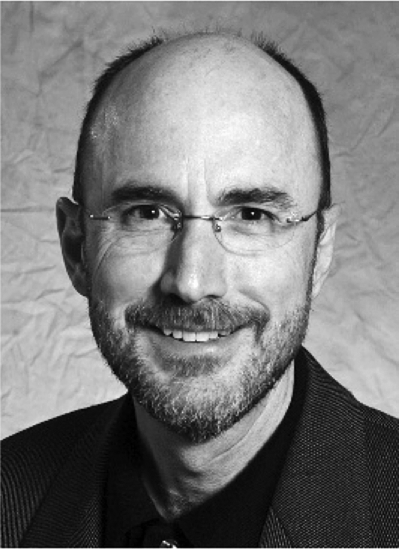Vol. 30, No. 2 (February 2019)
Gary P. Jacobson, Ph.D.
Editor-in-Chief, Journal of the American Academy of Audiology

Editor-in-Chief
It has been demonstrated many times using behavioral techniques that auditory perception suffers when listeners must process auditory signals at faster compared to normal rates. It is the effect that “aging” has on auditory reception and perception that can at least, in part, explain poorer performance by elder subjects on auditory perceptual tasks. In this month’s JAAA, McCullagh and Shinn have engaged two groups of adults in a classical P300 “oddball” paradigm. The two groups of subjects were younger (mean age 21 years) and older (mean age 66 years). For those of you who are unfamiliar with the “oddball” paradigm, the listener is presented (usually binaurally) with two tones, one that is lower in pitch (e.g., 500 Hz) that occurs frequently (e.g., with a probability of occurrence of 85%) and another that is higher in pitch (e.g., 1000 Hz) that occurs infrequently (e.g., with a probability of occurrence of 15%). The listener’s task is to detect when the infrequently occurring tone (the “oddball”) occurs. Some type of response usually is required of the subject that indicates they have identified the infrequent tone. The response might be a button press or the subject might be asked to count silently the infrequently occurring tone.
In the current article, listeners were asked to count the number of oddball tones and report the total to the investigator. When brain activity is recorded during that paradigm, a number of evoked responses can be recorded. These responses included the exogenous (i.e., the obligatory) N1 and P2 responses. Additionally, there is a second negativity (N2a representing the pre-conscious recognition by the brain that the oddball has occurred) and that is followed by the positivity called the P300 (representing the conscious recognition that a significant event has occurred). It is referred to as P300 because using the simplest paradigm the late positivity shows a median latency of ∼300 ms. There are a number of variables that can influence the latency and amplitude of P300 including the difficulty of the perceptual task. That it should take longer to identify the target signal when the perceptual task is made more difficult makes sense, doesn’t it?
The investigators assessed the P300 (latency and amplitude) in young adults and older adults. They varied task difficulty by systematically worsening the signal to noise ratio from +20 dB to +10 dB to 0 dB.
You will have to read the article to obtain the details but using the endogenous P300 event related potential the investigators reported that, in general, P300 latencies were significantly longer in the older group. The editors invite you to read this interesting article in the February issue of JAAA.
Journal of the American Academy of Audiology
Vol. 30, No. 2 (February 2019) • Read Online
Articles
Parent Report of Amplification Use in Children with Mild Bilateral or Unilateral Hearing Loss
Elizabeth M. Fitzpatrick, Isabelle Gaboury, Andrée Durieux-Smith, Doug Coyle, JoAnne Whittingham, Mina Salamatmanesh, Rachel Lee, and Jessica Fitzpatrick
The Effects of Nonlinear Frequency Compression and Digital Noise Reduction on Word Recognition and Satisfaction Ratings in Noise in Adult Hearing Aid Users
Patrick N. Plyler, Brittney Tardy, and Mark Hedrick
Bilingualism and Speech Understanding in Noise: Auditory and Linguistic Factors
Erika Skoe and Kateryna Karayanidi
An Evaluation of Hearing Aid Beamforming Microphone Arrays in a Noisy Laboratory Setting
Erin M. Picou and Todd A. Ricketts
Hearing Screening in the Community
Gabrielle H. Saunders, Melissa T. Frederick, ShienPei C. Silverman, Tina Penman, Austin Gardner, Theresa H. Chisolm, Celia D. Escabi, Preyanca H. Oree, Laura C. Westermann, Victoria A. Sanchez, and Michelle L. Arnold
Can Self-Reported Personal Audio System Volume Predict Actual Listening Levels in Young Adults?
Peter Torre III and Mark B. Reed
JAAA CEU Program
JAAA CEU Program
Journal of the American Academy of Audiology
ISSN: 1050-0545
DOI: https://doi.org/10.3766/jaaa.30.2.1
Volume 30, Issue 2, pages 92-92
American Academy of Audiology
Related Posts
JAAA Editorial: Cognitive Bias in Audiology Research
Gary P. Jacobson, PhD Vol. 31, No. 2 (February 2020) • Access full issue online (members-only) By Gary P. Jacobson, PhD Editor-in-Chief The featured article in this…
JAAA Editorial: Clinical Case Reports: Striking the Right Balance
Vol. 31, No. 1 (January 2020) • Access full issue online (members-only) Devin L. McCaslin, PhD Deputy Editor-in-Chief Devin L. McCaslin, PhD Deputy Editor-in-Chief As both…
JAAA Editorial: The Effect of Loss of Speech Audibility on a Measure of Cognitive Function
Gary P. Jacobson, PhD Volume 30, Number 10, November/December 2019 Gary P. Jacobson, PhD Editor-in-Chief Journal of the American Academy of Audiology It has been estimated…